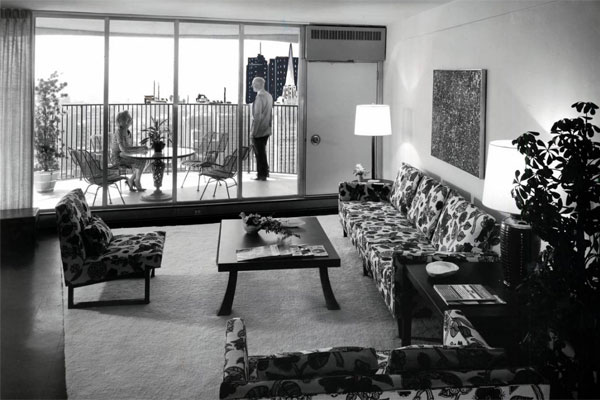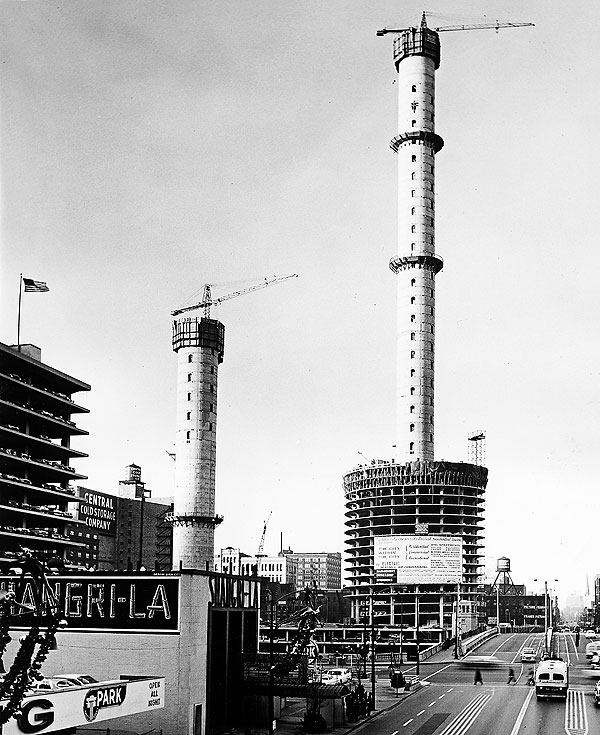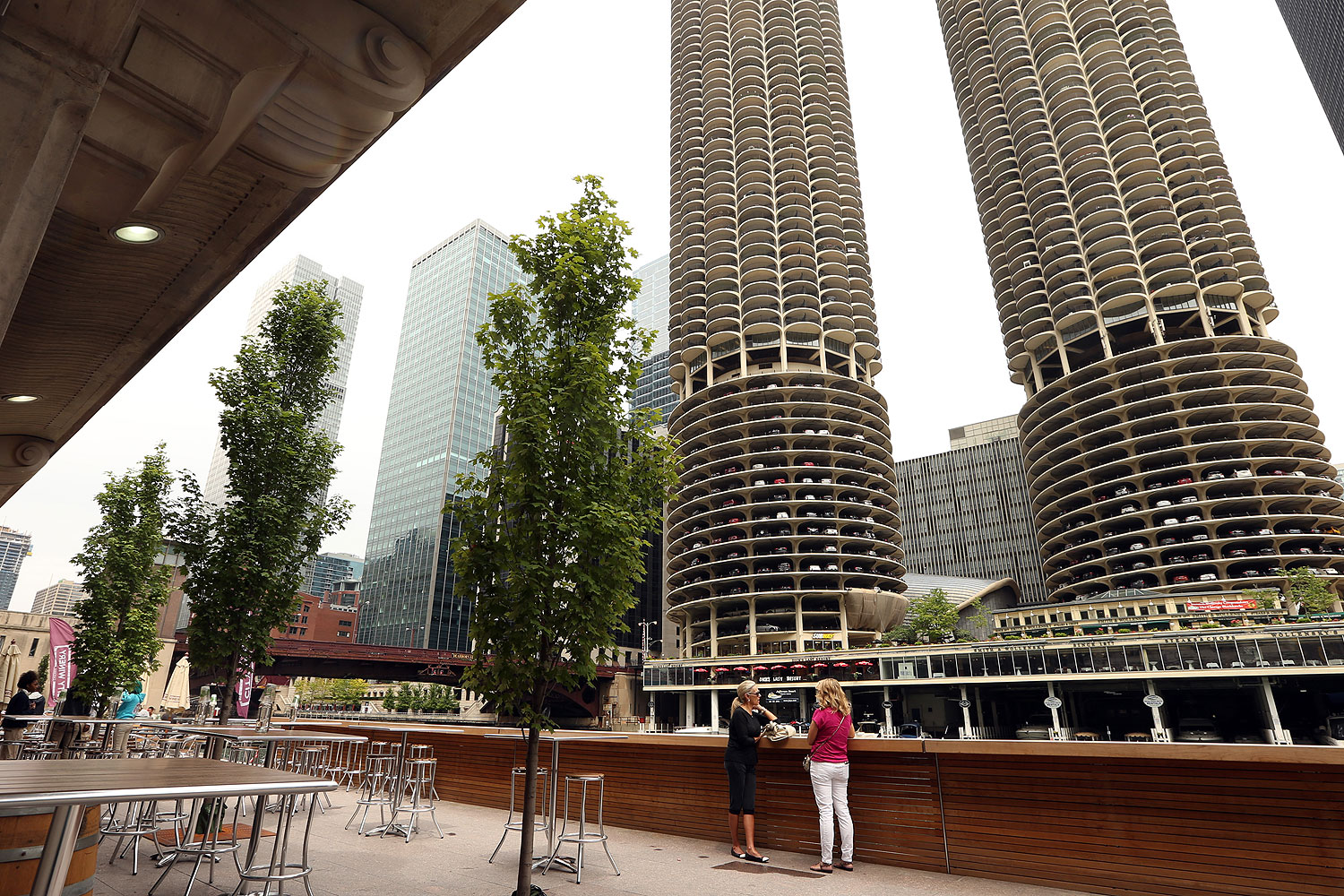Last week, the Metropolitan Planning Council announced its Great Rivers Chicago plan, which would reinvent the Chicago River, the Calumet River, and Sanitary and Ship Canal for a variety of purposes—barge parks and pop-up bars, public transit integration with water taxis, a doubling of riverfront parkland, and the goal that got the most attention, swimming in the rivers by 2030 after the Deep Tunnel project is completed. This last one was, unsurprisingly, greeted with skeptical humor.
It's not for the first time that green dreams for the river have been greeted that way. In 1973, shortly before his death, Mayor Daley told a House of Representatives panel that he envisioned Loop workers "catching salmon, trout, and bass" and barbecuing them on the spot, within a year. The Tribune asked an expert about the feasibility: "Al Lopinot, chief fishery biologist, Illinois Department of Conservation, chuckled when informed of Daley's observations."
The desire to hurry along the Chicago River's transformation from an industrial corridor to a recreation hub goes back long before the Emanuel administration, which has made the river a centerpiece of its urban planning. And the first big step was Bertrand Goldberg's Marina City, which was revelatory not just in its embrace of the river as an amenity, with its marina at the base, but in its nature as an early, middle-class anchor in the heart of downtown.
In the late 1950s, when the project came together, Goldberg was an odd choice for such a transformative project. He was well-trained—he'd apprenticed for Ludwig Mies van der Rohe, studied at the Bauhaus, done his postgraduate work at the Cambridge School of Landscape Architecture (later absorbed by Harvard), and worked for the groundbreaking Chicago architects Keck & Keck. He'd done a fascinating range of work—designing furniture, prefabricated housing, cheap concrete-block housing, a gas station, an ice-cream shop, a mobile delousing unit, a crate for anti-aircraft guns that could be converted into a house, a modular prefab bathroom, inexpensive wartime residential developments, and a union hall. (Goldberg used union labor on his prefab housing, a point of contention in the industry.)
He'd done clever, diverse, and innovative work, and made a leap forward with Hyde Park's Drexel Home and Gardens, a low-cost modernist housing project started in 1954. But Marina City was something altogether different, an ambitious mixed-use skyscraper as self-contained urban center.
The union hall Goldberg had built was for the International Union of Building Maintenance Employees, run by Bill McFetridge, whom Goldberg described as "a great man, brilliant and sophisticated, and yet publicly he was a labor stiff; he was corrupt in many ways as the labor movement was corrupt." McFetridge had purchased the Marina City land for $3 million as a real-estate investment with the union's money, and turned to Goldberg to develop it.
They were an odd couple. But as Goldberg told the oral historian Betty J. Blum, the project otherwise never would have happened.
"My background was totally different, but they loved my ideas. They were amused by my innocence to a great extent, and they respected my work," Goldberg said. "In a measure, it was a perfect combination to build Marina City. It could not have been done by normal real estate or investment people. They wouldn't have touched it."
Why? Goldberg had found out a few years before.
"I went to Arthur Rubloff [one of the most powerful developers to ever work in the city] in 1955 and I pointed out to Arthur Rubloff a piece of property on the river where the Sun-Times building is now. It was vacant at that time. I said, 'Arthur, this is a wonderful place to build apartments for people.' Arthur's response to me was 'Who wants to live downtown?'"
That line of thinking wasn't alien to Goldberg; after all, much of his work to that point had been prefab housing in places like Melrose Park and Maywood. But he believed that the same principle would work in a city, vertically stacking inexpensive housing into a preplanned community in the midst of downtown. He had before him public and business leaders worried about how Chicago's downtown growth was lagging behind that of other cities, and in McFetridge, a financier employed by the working class. (Not to mention a constituency, literally building maintenance employees, that benefited from large buildings.) When it opened in 1962, apartments rented for $115 to $400 a month, about $900 to $3,200 in current dollars. According to Goldberg, tenants made from $7,000 to over $100,000, or about $55,000 to over $800,000 adjusted for inflation. It wasn't low-income housing, but it was a broad range.

His radical idea needed mortgage insurance from the Federal Housing Administration, which was plowing its money into the kind of new suburban housing Goldberg had previously worked on. To get FHA backing, Goldberg had to get them to reconsider housing and how it supported so-called "family living," which at the time was a concept limited to nuclear families with young children.
"I pointed out to the federal government, through the Department of Labor which I had access to through Bill McFetridge, that there was a totally new family constituency, and that much older children were living at home and much older children were living out of home on an independent basis who still considered themselves part of an extended family," he said.
Marina City also had to squeeze by city zoning codes. The city had just passed an ordinance permitting Planned Urban Developments, easing the ability to negotiate the design of mixed-use developments by loosening zoning-code strictures. The minimum lot size for such a project was four acres; Goldberg finagled the city's first PUD project onto 3.1 acres of land.
"Probably because Marina City seems a radical departure from the standard downtown building, many people remain puzzled as to just what the project is composed of," Goldberg told the Tribune in 1961. "Considered as a whole, Marina City will be a sort of microcosm of urban environment: work, living, and recreation area on one site. This combination of uses for downtown buildings must come if our central city area is to survive."

After the buildings were finished the next year, the Sun-Times reported that they "caught the city by surprise." When the Tribune visited in 1963, it wrote about the towers as a new frontier: "Pots, pans, and a trusty rifle were the equipment of our original pioneers as they struggled across the prairies. A hundred years later, homemakers counted their lawnmowers and snow shovels as part of their survival kits. But the story hasn't ended yet. A new breed of pioneers is reaching for the sky! Their 'survival' kits include flashlights, overshoes, and miscellaneous small hand tools, for they know that being prepared is the best way to meet each day's challenges when they move into yet-unfinished high-rise buildings springing up around the city."
But it didn't surprise the rest of the country. In 1960, New York governor Nelson Rockefeller asked McFetridge and his union to replicate the still-under-construction skyscraper in his state, citing "the middle income housing field where there is the greatest need for more developments of this nature." The Baltimore Sun reported in 1961, on its own city's growing rental market, that "the possibility also of combining office and apartment facilities in one building, using the same heating and maintenance force (such as being done in Chicago at the 'Marina City') opens up a new field for imaginative developers." The Tribune's Kermit Holt observed an exhibit at the Seattle World's Fair in 1962 that presented a model of Marina City as "an example of what apartments of the future will look like… nothing like Chicago's Marina City has been built anywhere else."
By 1985, it seemed to have worked, the Tribune reported in a piece titled "Near North tilts to yuppies: 'New wave' enriches enclave's vital statistics":
A "new wave" of residents on the Near North began at a trickle when Marina City opened in 1961, [Northwestern professor Louis] Masotti says. "Marina City broke ground for an upwardly mobile population," he says.
With rents lower than on the Gold Coast or Streeterville, Marina City, which has converted to condominiums, attracted people who worked downtown and wanted to live near their work.
"We had no marble in it, we had limited stainless steel in it. It was a building that was at the time meant to open up a new area with attractive new rates for rents," Goldberg told Blum. Don't forget that Marina City was built for a trade union. It was built with a certain amount of unstated but nevertheless existent idealism." And it worked. But Goldberg's greater ambitions for the Chicago River would take longer.
He could build a city within a city, but not clean the city's river. Blum told Goldberg that "up until the time of Marina City, Lake Michigan had been considered our scenic wonder and the river was like our back door. No one paid any attention but you created an awareness." He responded that it was "not adequate."
In 1984, he reflected on its inadequacy to the Tribune's Laura Green: "Developers and planners should treat the river like a street front. Instead, they treat it like a back alley…. If the city regarded the river's banks the way it regards the beachfront, it would budget money to protect them… But the city doesn't even have money for garbage collection. Will they ever have it for the river?" Almost a decade later, prior to the 1993 World's Fair, he proposed to Tom Ayers (former ComEd CEO, father of William) that it be a floating fair running from the lake, south to Chinatown, and north to Goose Island. "[Ayers] found it attractive but not persuasive," Goldberg told Blum. "People still don't understand the wedding of earth and water."
In truth, Goldberg was at the mercy of an engineering project much greater than any Chicago architect has ever attempted—Deep Tunnel, the four-decade, three-billion-dollar project scheduled to be fully functional in 2029, is the cornerstone to the Great Rivers plan, designed to eliminate sewer overflows into the river. But even in all its glory it may not be a complete fix; in 2010, the Illinois climatologist Stanley Chagnon calculated that 50-year rainstorms would be too much for for the system, and climate change could increase the frequency of storms of that magnitude. If it proves inadequate, well, the history of Chicago is defined by inadequate solutions to our own excrement.




